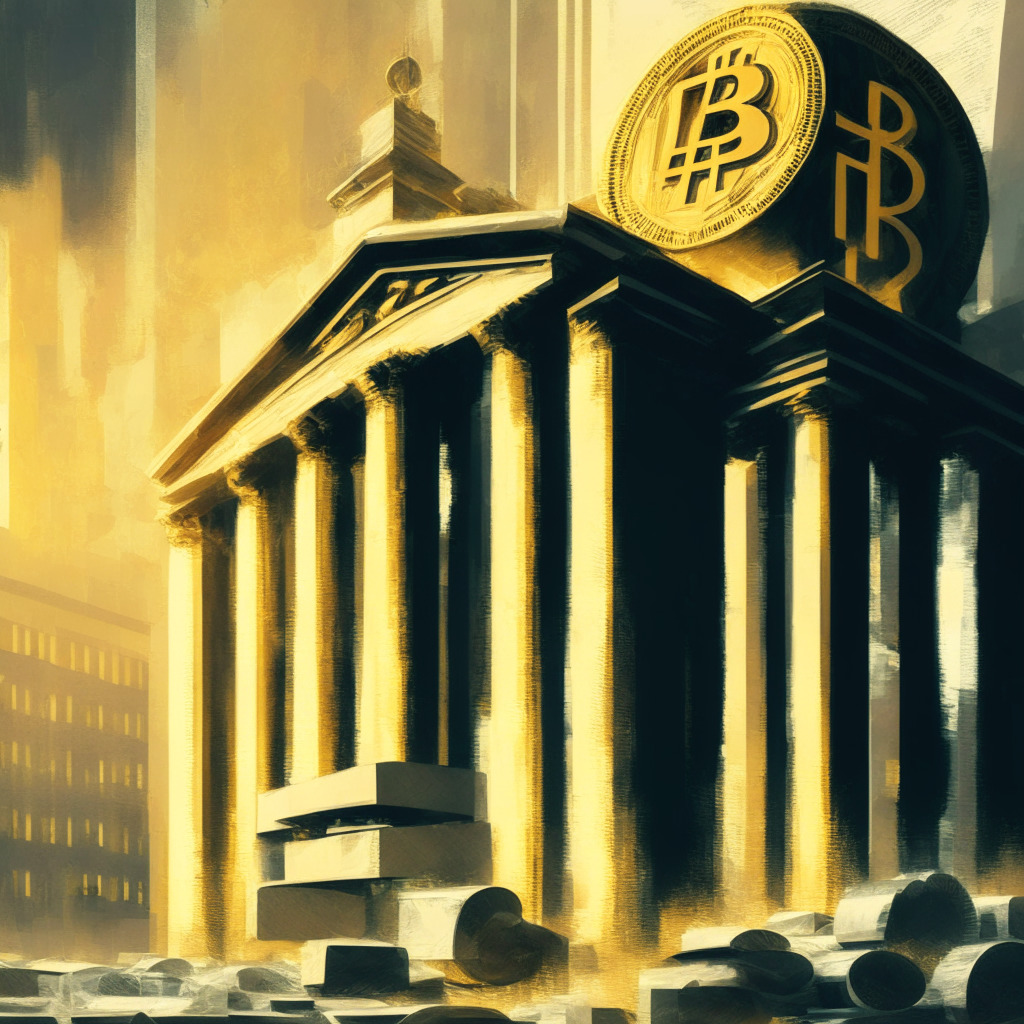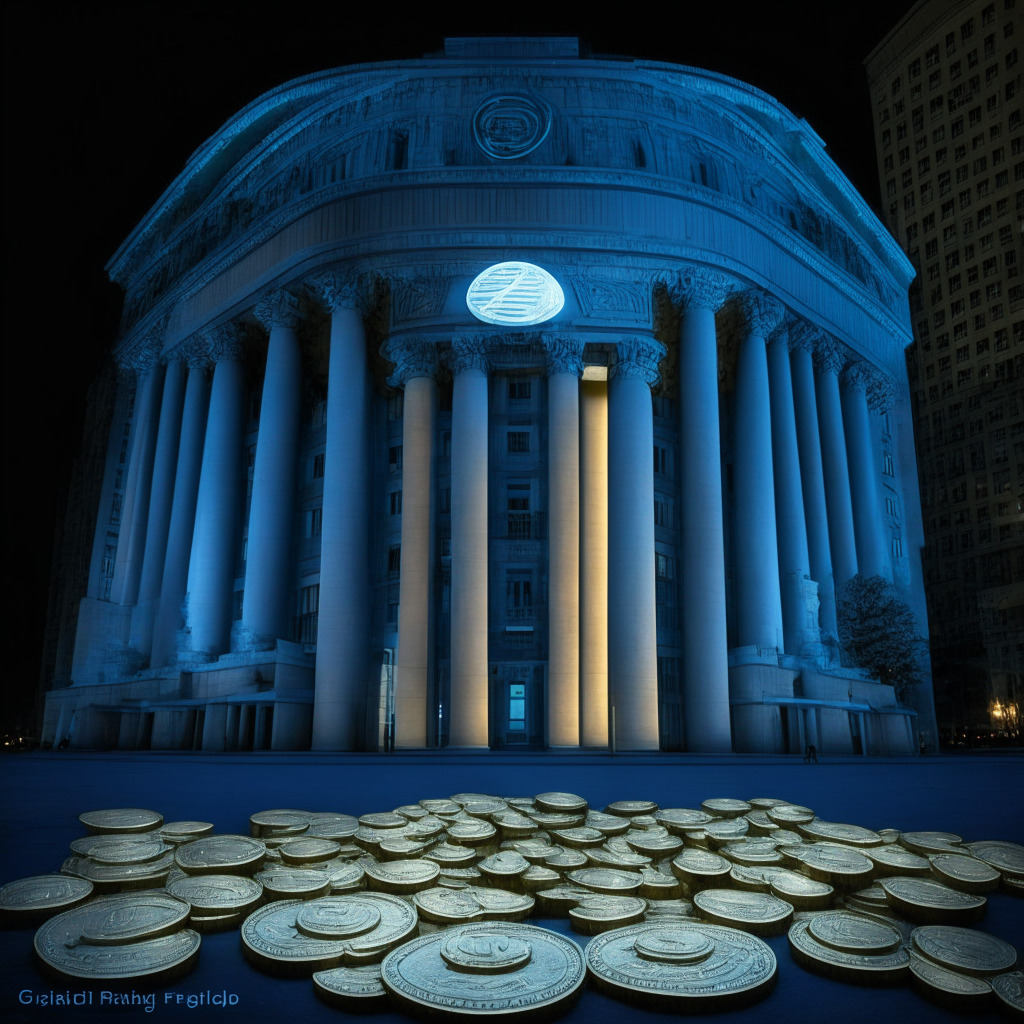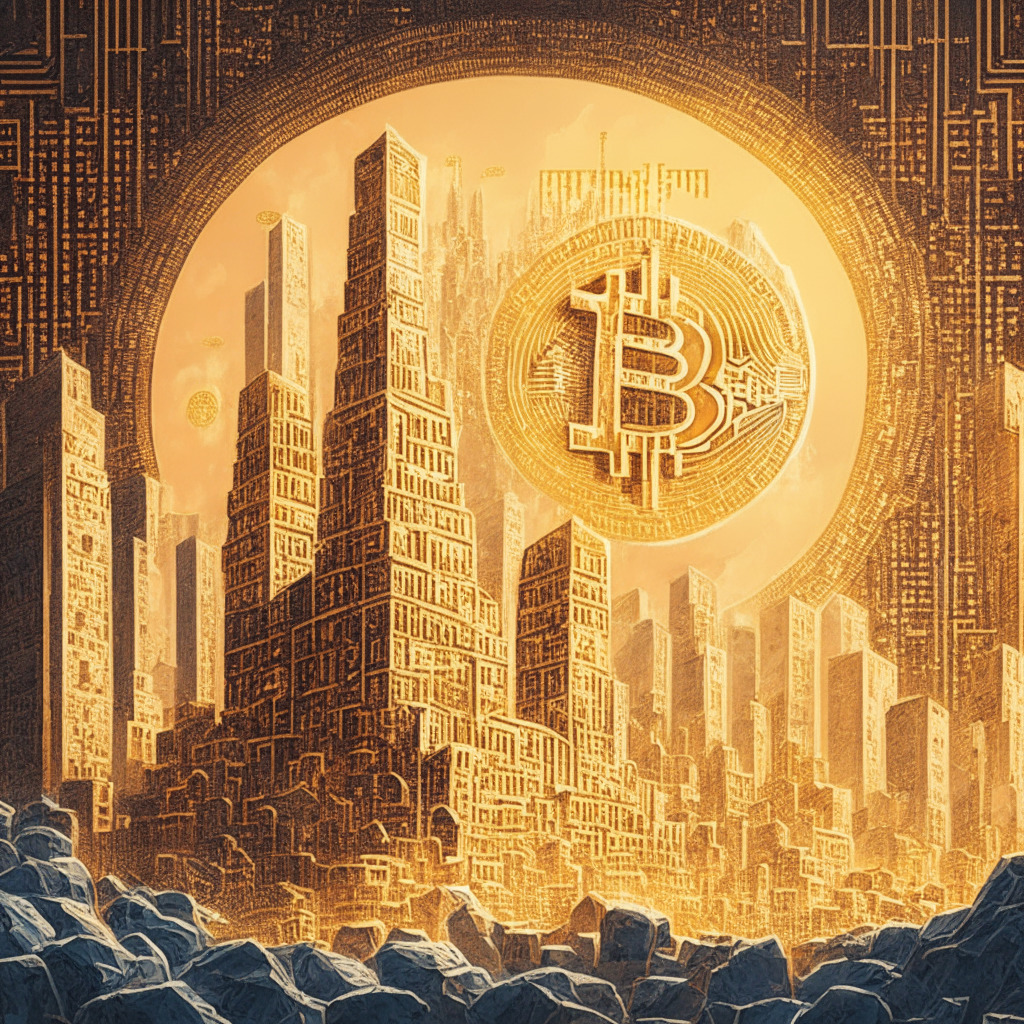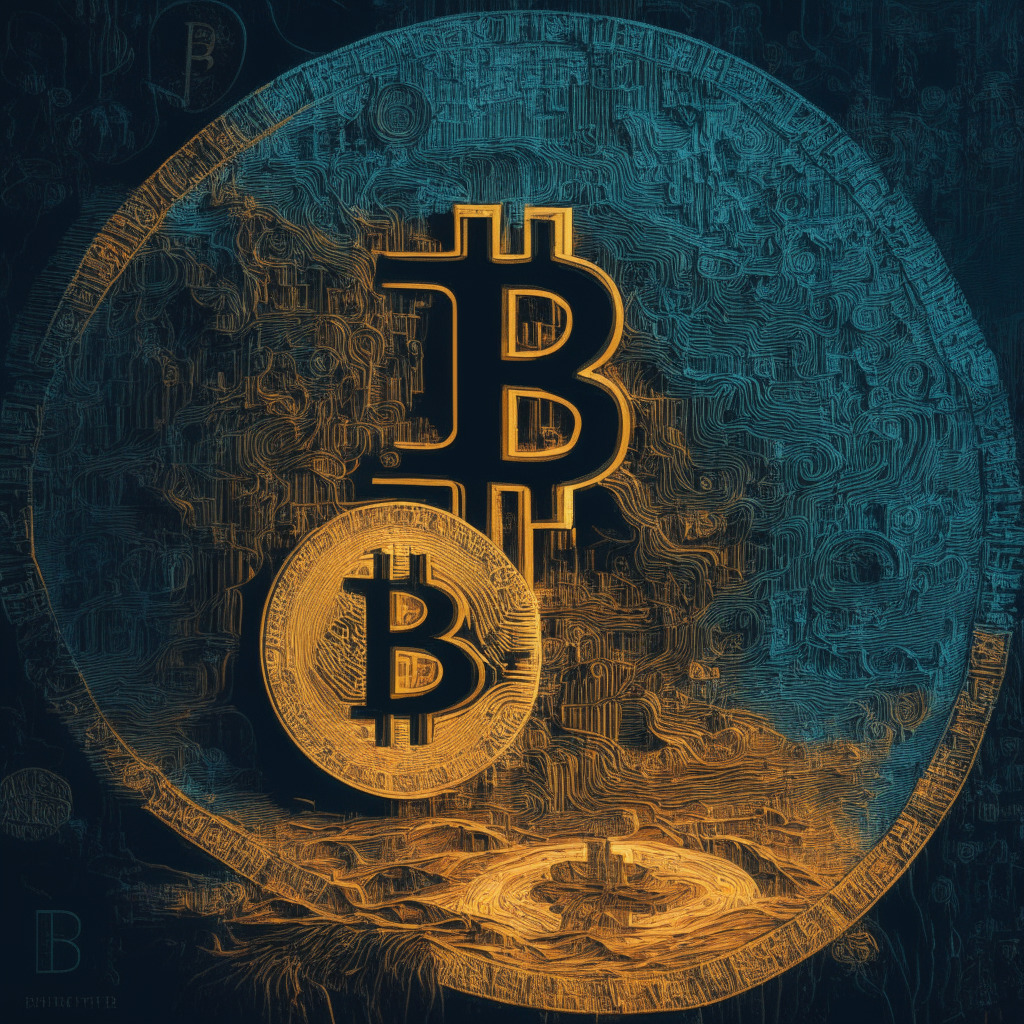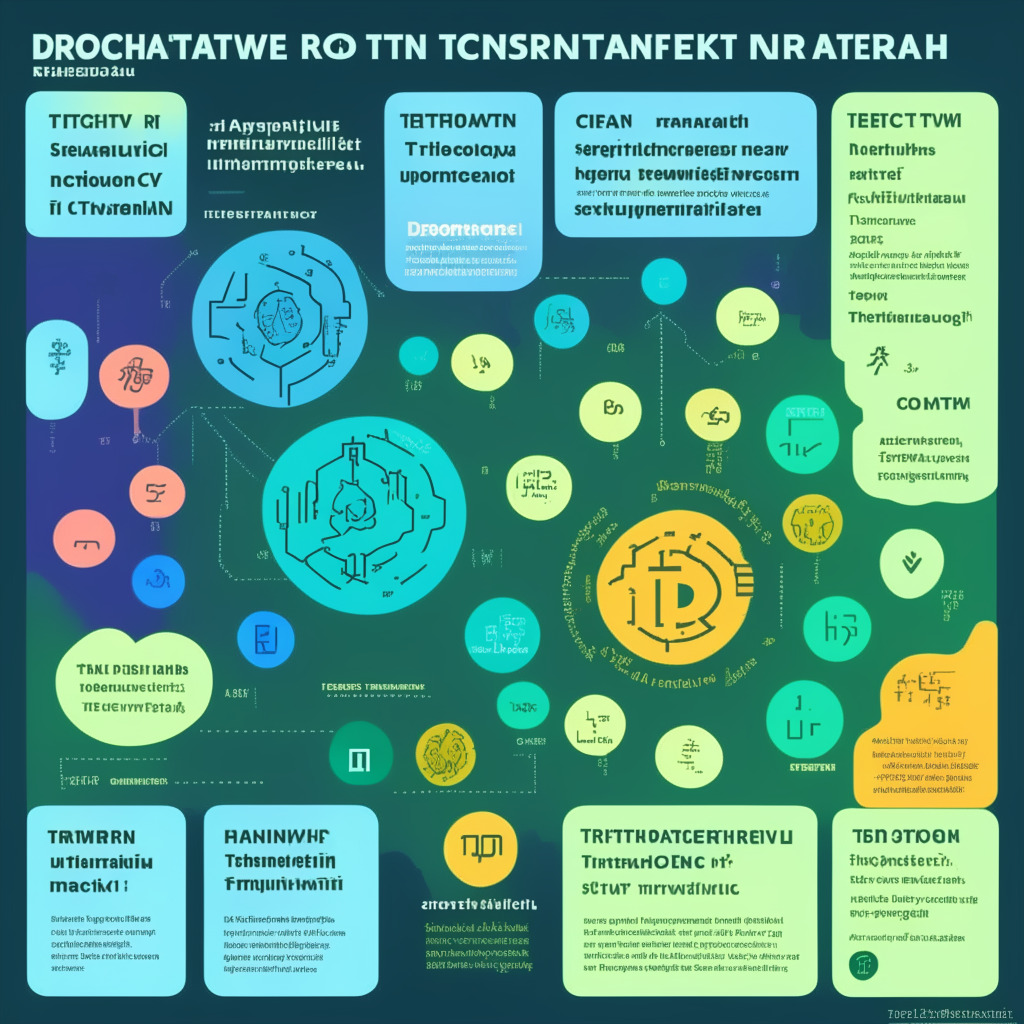“The FOMC meeting is expected to continue the trend of increasing interest rates due to persistent inflation concerns. Meanwhile, despite macroeconomic shifts, Bitcoin and crypto markets remain stable. The Fed’s attempts to align a thriving job market with price reduction strategies pose considerable challenges.”
Search Results for: Reserve
Federal Reserve’s CBDC Hunt: A Financial Death Star or Leap Towards Progress?
“The San Francisco Federal Reserve Bank’s job posting for a “senior crypto architect” has sparked criticism. There are concerns CBDCs could be misused as tools for coercion and control. Representatives like Warren Davidson contend CBDCs should prioritize being a stable store of value and an efficient means of exchange, rather than being used for surveillance and control.”
Navigating Bitcoin’s Price Volatility: Impact on Altcoin Market and Anticipation for the Federal Reserve’s Decision
Bitcoin’s ongoing price struggle against overhead resistance may be prompting interest in other cryptocurrencies. However, the market scenario remains uncertain pending a potential Fed rate hike and volatile investor behavior. This uncertainty underscores the complex interplay of market trends, financial policies and investor behavior in determining cryptocurrency market outlook.
Bitcoin’s Tense Brawl with the $29,500 Support Level: How the Federal Reserve Meeting Could Revive It
Bitcoin continues to hover around the $29,500 support level amid a lack of major economic events or institutional adoption updates. Traders are closely monitoring BTC’s 21-Day Moving Average, a critical barrier for short-term gains. Meanwhile, upcoming Federal Reserve policy changes could trigger movement in Bitcoin markets. Optimism about potential institutional adoption, positive technical indicators, and easing financial conditions could drive Bitcoin’s performance.
Decoding FedNow: U.S Federal Reserve’s Stand on CBDCs and Future of Instant Payment Services
The U.S. Federal Reserve’s new instant payment service, FedNow, set to launch in July 2023, is not associated with central bank digital currencies (CBDCs), but operates within the fiat ecosystem. Despite testing by numerous institutions and growing CBDC interest globally, the Federal Reserve reiterates, it requires legislative authorization before issuing a CBDC.
Unravelling Tesla’s Crypto Conundrum: A Tale of Cryptocurrency Reserve Strategy
“Tesla has refrained from buying or selling any bitcoin for four consecutive quarters, maintaining a digital assets stash of $184 million. Accounting rules prevent asset valuation increase unless assets are sold, creating questions about Tesla’s conservative crypto approach amidst market volatility.”
Bitget’s Staggering $1.44 Billion Reserve Ratio: Financial Fortitude or Overcautious Strategy?
Crypto exchange Bitget declares a debt-free status and remarkable reserves totalling $1.44 billion, exceeding the industry-standard backing with a reserve ratio of 223%. Built through transaction fee profits and returns from investments, Bitget seeks to maintain transparency and reinforce trust by issuing monthly proof-of-reserve statements. The exchange also initiates a crypto lending program, enabling users to maximize investment possibilities.
Cryptocurrency Reserves Skyrocket: Bitget’s Financial Strength Vs. Transparency Questions and Bitcoin ETF’s Promise
“Cryptocurrency exchange Bitget boasts a total proof-of-reserves ratio of 223% across 31 crypto assets. Relying on transaction profits and investment returns, Bitget operates a $300 million User Protection Fund. Meanwhile, in Europe, London-based Jacobi Asset Management is set to launch its Bitcoin ETF, offering a significant departure from customary exchange-traded notes.”
Intriguing Possibilities for Bitcoin’s Future: AI’s Currency and a Market Influenced by Federal Reserve Projections
The ex-CEO of BitMEX, Arthur Hayes, argues Bitcoin’s potential to be the go-to currency for artificial intelligence due to its constant availability, digital makeup, and automation. Bitcoin stands out with its scarcity, censorship resistance, and value storage. Bitcoin’s market value is also closely tied to investors’ interpretations of the Federal Reserve forecasts and employment data.
How Federal Reserve Meetings Impact Cryptocurrency & Up-and-Coming Meme-Based Tokens
“The crypto markets are currently retreating somewhat, with Bitcoin and Ether slightly down. Market volatility is affected by various factors including macroeconomic considerations and the dynamics of ‘meme’ coins. Formulating a balance and understanding potential risks and rewards is key in this unpredictable investment landscape.”
Economic Data Storm: Impact on the Crypto Scene and the Looming Federal Reserve Decision
“The U.S. Federal Reserve’s scheduled meeting this week could strongly affect the crypto scene. Rate hikes and employment data from this meeting will be under heavy scrutiny from crypto enthusiasts. As shifts in interest rates and economic trends raise anticipation, the impact on digital coins remains uncertain.”
Chainlink’s Proof-of-Reserves: True Transparency or Illusion of Accountability?
Chainlink’s proof-of-reserves service promises to allow crypto custodians to directly monitor real-world assets on blockchains, increasing safety and transparency for DeFi users. However, the durability of this solution is questioned as the credibility of data depends on the source, possibly masking inadequate accounting practices and reinforcing trust issues in centralized entities.
Exploring the Paradox: Reserve Bank of New Zealand’s Views on Cryptocurrency
The Reserve Bank of New Zealand (RBNZ) is taking cautious approach towards crypto-assets, expressing concerns over consumer protection and potential commercial or regulatory barriers. However, ambiguously, the concept of Central Bank Digital Currency (CBDC) has caught its interest, despite its declaration not to replace physical cash.
Tether and Kava Partnership: Stablecoin Expansion Amid Reserve Concerns
Tether plans to launch USDT tokens on Kava, a scalable layer-1 blockchain, providing Kava’s community access to the dependable stablecoin. Despite concerns about USDT’s stability and reserves, this partnership strengthens Tether’s position as a market-leading stablecoin.
Stablecoin Reserve’s $20M Move: Boosting Liquidity and Power in Yield Farming Governance
Reserve has invested $20 million into the governance tokens of yield farming applications, aiming to enhance RTokens’ liquidity and increase Reserve’s voting power. The investment could introduce new features such as collateralized loans, wallet products, and tokenizing real-world assets, benefiting the growth and adoption of stablecoins.
Revelations on Tether’s Reserves: Chinese Securities, Stability & Regulatory Scrutiny
Tether Holdings Ltd. is under scrutiny as findings reveal it may have held securities issued by Chinese firms in its reserves backing USDT stablecoin. Regulators question the underlying assets providing USDT’s stability, raising concerns about potential regulatory risks and the stablecoin’s overall reliability.
Chinese Securities, Stablecoin Reserves & Media Outlets: Tether’s Reputation at Stake
Tether addresses reports of backing USDT with Chinese securities, stating the cited materials are outdated and their exposure to Chinese commercial papers was liquidated last year. The company emphasizes the importance of accurate and balanced information for the healthy development of the crypto industry.
Federal Reserve’s Impact on Bitcoin: Analyzing Market Uncertainty and Future Predictions
Federal Reserve Chair Jerome Powell’s recent statement on maintaining current interest rates has raised concerns among investors, possibly impacting Bitcoin’s value. The cryptocurrency market experiences a liquidity decline as uncertainty around a potential Bitcoin downturn looms. Meanwhile, Binance nears a compromise with the SEC to avoid asset freezing, and technical analysis reveals intriguing patterns for Bitcoin price prediction.
Federal Reserve Decision, Crypto Turbulence, and Top 7 Cryptos to Watch Now
Amid economic uncertainty and cryptocurrency market turbulence, investors may explore cryptos with strong fundamentals and favorable technical analysis, such as WSM, BNB, ECOTERRA, INJ, YPRED, FTM, and LPX. Careful analysis of fundamentals and technical indicators can help navigate the current market environment successfully.
Federal Reserve Rate Decision: Impact on Crypto Market and Inflation Control Battle
The Federal Reserve’s decision to maintain current interest rates has sparked mixed feelings and impacted crypto markets like Bitcoin and Ethereum. This highlights the delicate balance the Fed must strike between supporting economic growth and controlling inflation, amidst ongoing regulatory challenges in the digital assets industry.
Bitcoin’s Price Uncertainty: Impact of US Dollar Strength and Federal Reserve Decisions
Bitcoin’s price remains flat at $26K as the US PPI data shows slowing inflation and the market awaits the Federal Reserve’s rate decision. Analysts discuss the potential impact of US dollar strength on Bitcoin, with some expressing optimism and others focusing on potential challenges and risks.
Bitcoin’s Fate Hangs in Balance Ahead of US Federal Reserve Announcement
The Bitcoin price remains near $26,000 ahead of the key US Federal Reserve policy announcement on Wednesday, which may significantly impact crypto markets. The outcome of the meeting could influence Bitcoin’s bearish momentum and determine its short-term direction.
Custodia’s Battle with Federal Reserve: A Turning Point for Crypto Banks?
Crypto bank Custodia’s lawsuit against the Federal Reserve for allegedly delaying its master account application gains momentum following a Wyoming Judge’s refusal to dismiss the case. The outcome could significantly impact the future of crypto banks and traditional financial institutions, highlighting the importance of balancing innovation and regulatory oversight.
Federal Reserve’s Next Move: Impact on Bitcoin and Market Volatility
The jobs report and Federal Reserve’s potential rate hikes, alongside a recently passed debt ceiling deal, play crucial roles in shaping the overall market mood. With the VIX index at a 52-week low, cheaper options prices and macroeconomic events could significantly impact markets.
Crypto and Equity Markets Dip: Impacts of Federal Reserves and Debt Deals Unveiled
As crypto and equity markets face a dip, Federal Reserve governors’ hawkish comments and debt deal signs have grabbed investor attention. Bitcoin has lost 3.2% in 24 hours, with ether declining by 2.8%. This month, Bitcoin may potentially register its first negative monthly return.
Trust Reserve Arrest in China: CBDC Suppression or Necessary Regulation?
The recent arrest of Trust Reserve team in China, the company behind two stablecoins backed by CNY and HKD, has stirred the crypto community. This event, which might be linked to China’s CBDC crackdown, highlights the importance of e-CNY and raises questions on China’s cryptocurrency regulation approach.
Navigating Crypto Amid Federal Reserve’s Liquidity Tightening and Debt Ceiling Debates
Crypto enthusiasts should note Cleveland Fed President Loretta Mester’s support for liquidity tightening and consistent interest rate policy, as her comments impacted Bitcoin’s value. The market’s response demonstrates the significance of global economic events and Federal Reserve policy decisions on the cryptocurrency landscape.
Ethereum Exchange Reserves Hit 5-Year Low: Bullish Momentum or Decreased Interest?
Ethereum balance on crypto exchanges hits five-year low as investors anticipate price increase. Low exchange reserves indicate bullish momentum, but decreased volatility and trading volumes post-Shanghai upgrade warrant cautious approach in investment decisions.
Federal Reserve Uncertainty: Top Crypto Picks Amid Market Downturn & Interest Rate Debate
The Federal Reserve’s uncertainty regarding interest rate changes has impacted the crypto market, with the total market cap declining by 2.98%. Despite this downturn, cryptocurrencies like KAVA, AI, RNDR, ECOTERRA, TON, YPRED, and DLANCE show potential growth opportunities due to strong fundamentals or technical analysis. Investors should consider these factors along with global economic factors affecting the market.
Federal Reserve Rate Hikes: Impact on BTC Price and Investor Preferences for Ethereum
US Fed officials consider more rate hikes despite debt ceiling crisis, potentially impacting BTC price. St. Louis President James Bullard suggests raising interest rates twice this year, while Minneapolis Fed President Neel Kashkari believes in raising rates over 6% to curb inflation. Smart money seems more inclined to invest in Ethereum over Bitcoin, indicating a possible shift in investor preferences.
Texas Crypto Bill: Proof of Reserves Debate and the Quest for Transparency
The Texas legislature passed HB-1666, aiming to increase financial transparency among digital asset service providers like Binance. The bill requires cryptocurrency exchanges serving over 500 customers or managing above $10 million in customer funds to maintain sufficient reserves and report to the state. Texas lawmakers also updated the state’s bill of rights to include residents’ rights to own and use digital currency.
Bitcoin Dips Below $27,000: Analyzing Market Impact and Federal Reserve’s Role
Bitcoin dipped to lows of $26,380 on Bitstamp amid expectations of an interest rate hike by the United States Federal Reserve in June. Factors such as low jobless claims data and hawkish Fed comments contribute to downward pressure, as traders maintain potential bearish targets around $25,000.
